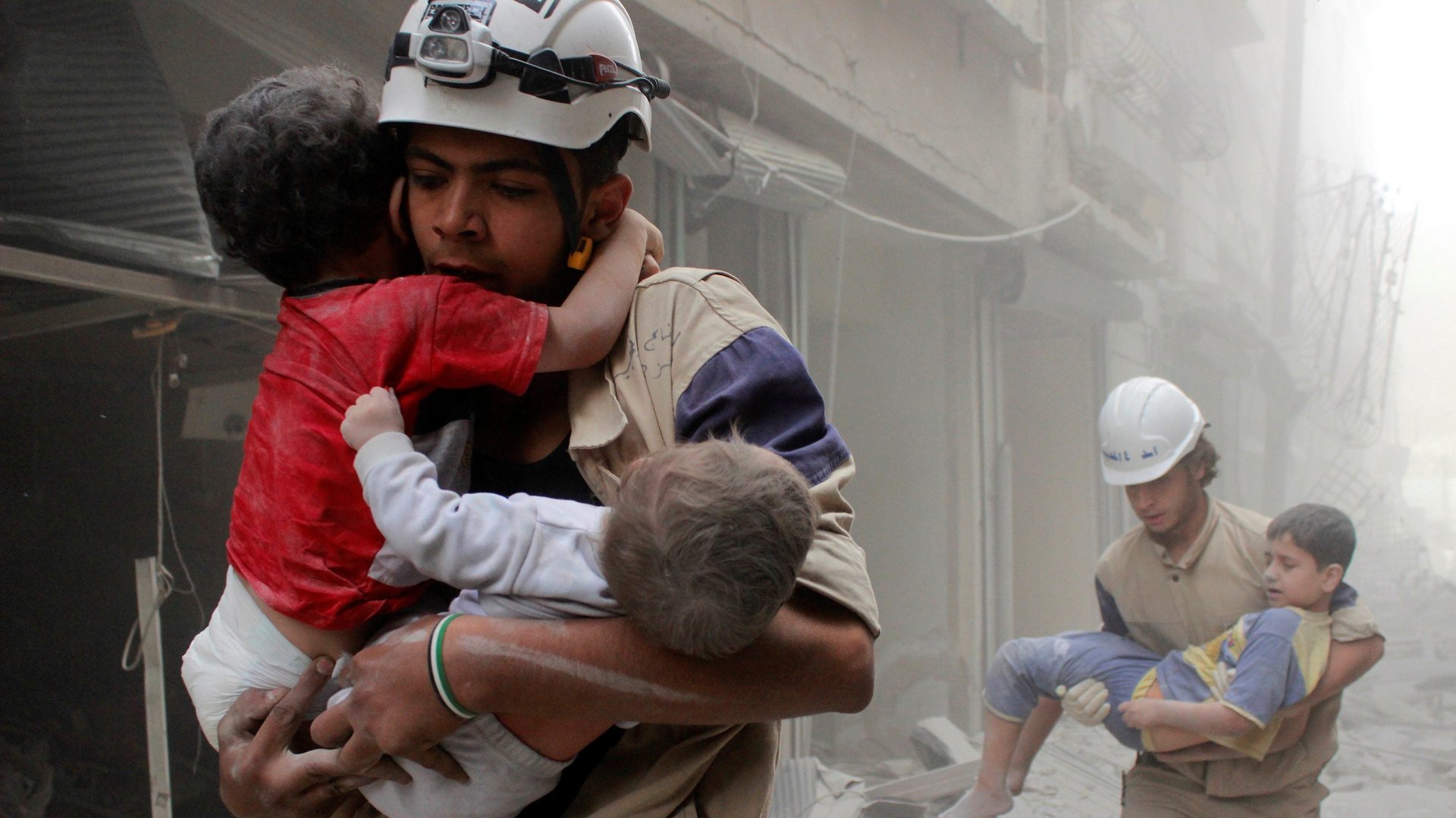The heart-wrenching image you shared from Aleppo might be a fake. Here’s what you can do
Two powerful photos of Syrian toddlers have come to define the horrors of the civil war that has ravaged the country.


Two powerful photos of Syrian toddlers have come to define the horrors of the civil war that has ravaged the country.
A year ago, a photo of the drowned three-year-old Aylan Kurdi changed how the world saw Syrian refugees. Aylan drowned trying to reach the Greek island of Kos at the height of the refugee crisis. In August, another shocking image emerged; the photo of Omran Daqneesh, a shell-shocked 5-year-old old who was rescued from an airstrike. It quickly became synonymous with the immense suffering in Aleppo.
“When you get that one photo, it can often be a tipping point in these events,” says Hany Farid, a professor of computer science at Dartmouth College who develops pioneering programs to detect digital forgeries. “Suddenly people take notice, suddenly there’s outrage and response.”
As the Syrian army closed in on Aleppo and pushed the rebels out of their last remaining enclaves, Twitter and Facebook were flooded with photos claiming to show atrocities. But while the images of Aylan and Omran have shown the power of photography, other images being widely circulated have shown its pitfalls. Some viral images have turned out to be fake.
An image of a girl supposedly running away, whilst bodies lay on the street, was in fact lifted from a Lebanese pop music video. On the other side, Syria’s ambassador to the United Nations held up an image that was meant to showcase the compassion of the Syrian army. “This is what the Syrian army is doing in Aleppo,” he told the Security Council. “Here you see a picture of a Syrian soldier providing help and succour to a woman, helping her get out of a car.”
The photo was actually taken during the battle of Fallujah, in Iraq, and shows a Popular Mobilization Unit (PMU) soldier helping an Iraqi woman.
The circulation of fake images isn’t unique to the Syrian conflict. When Israel fired air strikes into Gaza in 2014, the hashtag #GazaUnderAttack was used hundreds of thousands of times and claimed to show pictures of the airstrikes. But, some of the graphic images dated back to the 2009 Gaza-Israeli war, or were from conflicts in Syria and Iraq.
“The ultimate result of that is quite dangerous. You end up with people just sharing stuff because it feels right,” says Eliot Higgins, founder of investigate news site Bellingcat, who has broken some of the most important stories in the conflict so far; including the use of cluster munitions by Syria’s president Bashar al Assad, and the batch of Croatian weapons in the hands of Syrian rebels. “When we talk about war crimes, it’s not about what feels truthful, but what is truthful,” he adds.
Higgins is calling on people to carry out a simple reverse image search before sharing photos on social media claiming to show widespread atrocities. It would clearly show if an image is being reused from somewhere else. Users can either use Google Images or TinEye.
But reverse images can only do so much and it can be much harder to detect other type of digital forgeries. “It’s a very technical field. You really have to understand some incredibly complicated mathematics, optics, and physics,” says Farid.
It can be particularly difficult to tell the editing process that has gone into a photo, or whether the entire thing has been staged. Farid advises people to look at the source of most images and ask yourself; is that a source that you trust? And to be careful about drawing conclusions one way or another.
But in a time where trust in mainstream media is at a new low, even this might not be enough for some people.